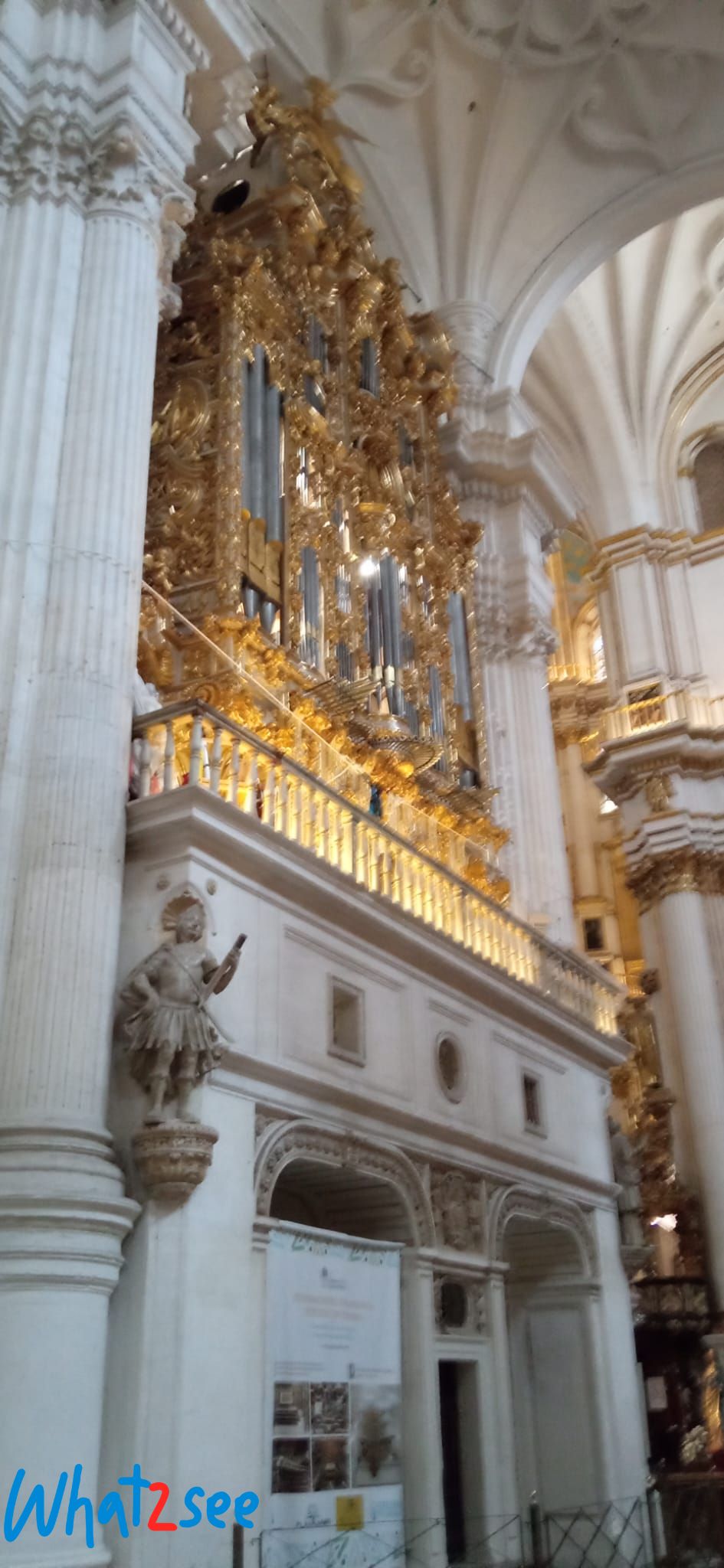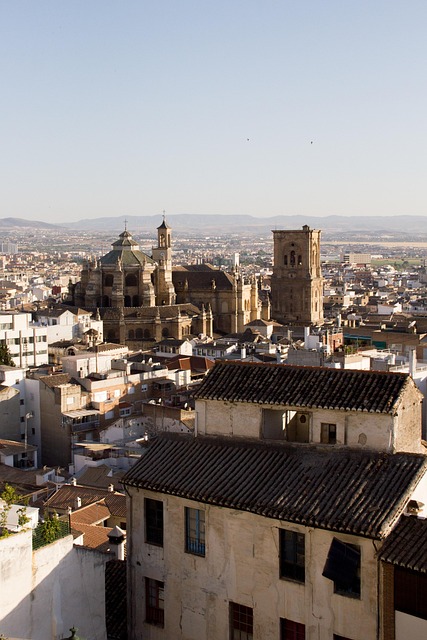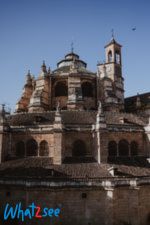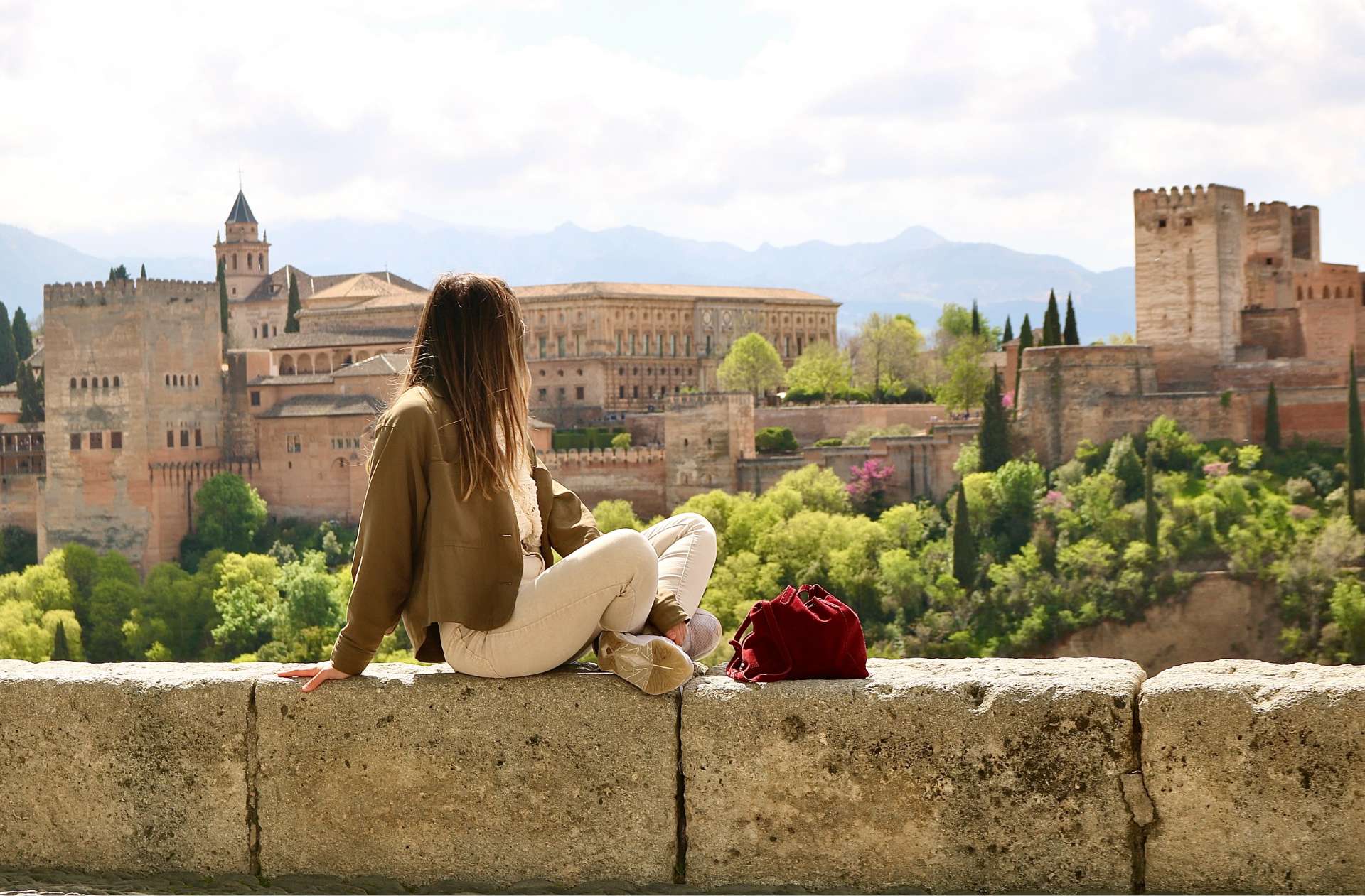The Cathedral of Granada: A Jewel of the Spanish Renaissance and a Treasure of Andalusia
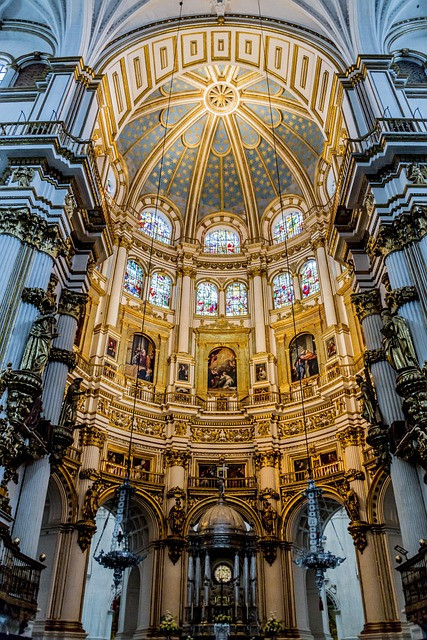
There are buildings you visit… and then there are buildings you experience. The Cathedral of Granada belongs to the latter. Because it’s not just a monumental church in the heart of the city; it’s a declaration of intent made of stone, marble, and light.
There are buildings you visit… and then there are buildings you experience. The Cathedral of Granada belongs to the latter. Because it’s not just a monumental church in the heart of the city; it’s a declaration of intent made of stone, marble, and light. It’s the place where Muslim Granada was transformed into Christian Granada, where Gothic art gave way to the Renaissance with a distinct Andalusian flair, and where history was turned into architecture—with all the pomp and ceremony of the 16th century.
Its full name is the Holy Metropolitan Cathedral Church of the Incarnation. Quite a mouthful, yes, but also weighty and solemn—just like the monument itself, which was intended to mark a turning point. Because this cathedral wasn’t built just anywhere or at just any time: it rose in the heart of newly conquered Granada, as a symbol of a new order, of power, of faith… and yes, also of that budding imperial aesthetic starting to shape Europe.
But beyond dates and illustrious names, the Cathedral is emotion, scale, wonder. Your neck feels it when you look up at its soaring vaults, your eyes feel it when they get lost in the details of the pillars, and your soul feels it when you step inside and sense that mix of reverence, beauty, and a little bit of vertigo.
Spanish Renaissance? Absolutely—and some of the best. Here, art isn’t just decorative; it’s narrative. Every chapel, every altarpiece, every curve of the façade tells the story of a Granada that left the crescent behind to embrace the cross, that swapped Arabic calligraphy for fluted columns, and that transformed former Muslim spaces into a stage for a new tale.
Want to understand Granada? Start with its cathedral. Not as a tourist who glances, but as a traveler who listens. Because this temple isn’t just filled with art and faith—it holds the echoes of a deep transformation, of a city still negotiating with its past. And yes, it holds a good handful of secrets and curiosities we at What2see Granada can’t wait to share with you.
So open your eyes wide, sharpen your ears… and come walk with us through a cathedral that’s not just meant to be seen—but felt.
How to Get to the Cathedral of Granada
Located right in the beating heart of the historic centre, the Cathedral of Granada hardly needs an introduction… but it does deserve some good directions. It rises in Plaza de las Pasiegas, like a jewel in the middle of Granada’s urban labyrinth—surrounded by shops, tea houses, and layers of history stacked one on top of the other.
And like any true treasure, getting to it can be as simple or as chaotic as you make it. So here are our stress-free tips to get you there while enjoying the journey.
On foot: the most charming (and most sensible) option
If you’re staying in Granada’s city centre, don’t hesitate—the best way to get to the cathedral is by walking. Along the way, you’ll enjoy an urban route full of gems like the Royal Chapel, the Alcaicería, or the lovely nearby squares, where the cathedral façade strikes a pose like it’s on the runway.
Plus, walking through Granada isn’t just about moving around—it’s about letting the city speak to you at every corner, through cobblestones, Moorish alleyways, and shop windows that smell of freshly baked bread.
By bus: perfect if you’re coming from the Albaicín or beyond
Staying in a neighbourhood with more slopes than the Tour de France? No problem. Granada has a handy network of minibuses—especially useful if you’re coming from places like the Albaicín, Realejo, or even from the train or bus stations.
Bus lines 8, 21, 33, C31, C32 and C34 will drop you within a short walk of the cathedral, usually along Gran Vía or Calle Reyes Católicos.
By car: only if you have no other option (and lots of patience)
We say this with love: driving to Granada’s historic centre is not a great idea—unless you enjoy playing traffic Tetris with restrictions and parking spots. The centre has limited-access zones (ZTL), and many streets are pedestrian-only or restricted to authorised vehicles.
If you do decide to drive, we recommend parking in one of the nearby public car parks, like San Agustín or Triunfo, and finishing the journey on foot. Just think: the sooner you park… the sooner you can start enjoying yourself!
From other tourist landmarks: a stroll between monuments
One of the best things about Granada’s Cathedral is that it’s part of a super compact monumental centre. From here, you’re just a stone’s throw from the Royal Chapel, the remains of the Nasrid Alcaicería, Plaza Bib-Rambla (perfect for a tapa or ice cream), and if you’re up for a 20-minute uphill walk, you can even reach the entrance to the Alhambra.
So really, instead of “how to get to the Cathedral,” the real question is how not to end up spending the whole day in the area.
And since you’re coming… come with your eyes wide open. Granada isn’t just a place to visit—it’s a place to discover, step by step. And if it’s with a good story (and with What2see Granada), even better.
Ready to hear everything they don’t tell you in the tourist brochures?
When Can You Visit the Cathedral of Granada?
The visiting hours for the Cathedral of Granada are:
Monday to Saturday: from 10:00 AM to 6:15 PM (doors close at 6:45 PM)
Sundays and public holidays: from 3:00 PM to 6:15 PM (doors close at 6:45 PM)
Please keep in mind the following considerations:
During special religious celebrations, opening hours may change without prior notice.
On Christmas Day (December 25) and New Year’s Day (January 1), the cathedral is closed.
For key dates in the liturgical calendar, such as Holy Week, it's recommended to check for updated schedules in advance.
Cathedral Ticket Prices:
General admission: €7 (includes audio guide)
Students under 25 with valid student ID: €5
Visitors with accredited disabilities: €5
Children under 12: Free
Schools from Granada and province (under 25, during school hours): Free
There’s also a combined ticket available for the Cathedral and the Royal Chapel, which is more economical than purchasing them separately.
What Style Is the Cathedral of Granada?
If you've ever stared at the Cathedral of Granada thinking, "What exactly am I looking at?"—you're not alone. This cathedral defies simple categorization. It's like that friend who's lived in three countries, speaks multiple languages, and blends customs effortlessly—a true fusion of styles and eras.
And it's not by chance. The Cathedral of Granada took over 180 years to build—nearly two centuries! During that time, monarchs changed, architects came and went, tastes evolved, and even concepts of the divine and human shifted.
Let's break it down, savoring it like a fine pionono (which, by the way, you can enjoy right after your visit).
Gothic Foundations: The Original Idea That Left Its Mark
It all began with Enrique Egas, an architect seasoned in grand religious works. His initial idea, back in 1523, was to erect a Gothic cathedral, in the style of Toledo or Seville: tall, solemn, with numerous ribbed vaults, five naves, and an air of "here we pray, but with reverence."
This Gothic design was initiated, and indeed, the building's floor plan retains that base, like a hidden skeleton. But soon, a plot twist changed everything...
Renaissance Takes Over: Diego de Siloé Enters the Scene
Then came Diego de Siloé, an artist with the soul of an architect (or perhaps the other way around), freshly arrived from Italy with the latest Renaissance ideas. Siloé didn't hold back: he radically transformed the project, but without discarding everything. He took the Gothic floor plan already underway and elevated it—literally—with a new Renaissance structure that introduced harmony, light, classical proportions, and a very personal touch of genius.
The result was something unprecedented: a cathedral with a Gothic soul, a Renaissance body, and a Granadan spirit. A monument that breathes classicism without renouncing its medieval roots.
Baroque Façade: The Dramatic and Glorious Final Touch
But of course, such an ambitious work wasn't going to conclude quietly. In the late 17th century, another great name entered the picture: Alonso Cano, a multifaceted artist (sculptor, painter, and architect) and Baroque genius. We owe him the majestic main façade, designed in 1667 as a grand triumphal arch that leaves you awestruck even before crossing the threshold.
This façade is pure Baroque theater: three openings, sculptures of Saint Peter and Saint Paul, and a medallion of the Incarnation that gives the cathedral its name.
And Inside... Space, Light, and Abundant Beauty!
The interior of the Cathedral is another spectacle. The first thing you notice is the spaciousness: five naves that open like marble fans, with the central nave taller than the others. The Corinthian columns—tall and slender—draw your gaze up to the ribbed vaults, which combine Gothic structure with Renaissance decoration.
But the most surprising is the light: it pours in through the stained glass windows, bathing every corner with a warmth you wouldn't expect in a church of this size. There's no solemn darkness or medieval heaviness here; there's clarity, air, and monumental beauty, as if the architecture were singing a hymn to the new Granada.
Are you ready to discover it with us on a journey filled with history, art, and a few unexpected anecdotes?
At What2see Granada, we tell its story like no one else... with passion, precision, and a couple of bad jokes included.
Who Ordered the Construction of the Cathedral of Granada?
Let’s set the scene: the year is 1492. While Christopher Columbus sets sail toward the unknown and half of Europe turns a new page, the final chapter of Al-Andalus has just been written in Granada. The Catholic Monarchs, Isabella and Ferdinand, enter the city in triumph, bringing with them a transformation that was not only political or military, but also spiritual, urban, and deeply symbolic.
And this is where our story begins—with an idea that went far beyond building a beautiful church. What they wanted to construct in the heart of the new Granada was a message carved in stone, a bold declaration: “This is no longer Al-Andalus. This is the heart of the new Christian world.”
The Dream of the Catholic Monarchs: A Transformed Granada
After the conquest, the Catholic Monarchs didn’t waste any time. Granada, once the capital of the last Nasrid kingdom, was to be reborn as a model Christian city. And since every great rebirth needs its grand symbol, they thought: “What if we build a cathedral here that says it all—without saying a word?”
Thus was born the idea of a monumental cathedral, not only as a place of worship, but as a beacon of a new era—one where religion, political power, and architecture would walk hand in hand.
But here’s the thing: Isabella and Ferdinand never saw a single stone laid. The idea hung in the air... until their grandson arrived, with even greater ambition.
Charles V: The Emperor Who Turned a Dream into an Empire of Marble
The Catholic Monarchs’ grandson was no ordinary heir. He was Charles V, Holy Roman Emperor, ruler of half of Europe, and master of the seas. A young man with a clear vision: Granada must become the jewel of the imperial crown—not just for its beauty, but for its historical and political meaning.
Charles didn’t just greenlight the construction of the Cathedral of Granada—he made it part of a larger imperial city project, which included:
Transforming Granada into the pantheon of the new Habsburg dynasty.
Establishing a center of political and religious power worthy of his empire.
Remodeling the city’s landscape with bold works like the Palace of Charles V in the Alhambra, the foundation of the University, and the installation of the Royal Chancery.
A Cathedral for the Soul of an Empire
The Cathedral of Granada was never meant to be just another church. It was the symbolic heart of a new order. A clear message, built right in the center of the former Muslim city, on the ruins of the old Great Mosque. You couldn’t make the point any clearer.
Every column, vault, and chapel carries that imperial and Christian vision of the world. This wasn’t just about faith—it was about building power, identity, and memory. A monument that proclaimed: “We have triumphed—and something new begins here.”
And they succeeded. Today, the Cathedral of Granada is not only a milestone of the Spanish Renaissance but also a time capsule that holds the spirit of a city in transformation.
And if you want to understand every corner, every symbol, and every twist of fate that made it possible...
come with us. We’ll walk you through it—with passion.
The Story of the Construction of Granada Cathedral
Building a cathedral isn’t something you do overnight… and here in Granada, we really took our time: nearly two centuries of construction! Like starting a giant puzzle, changing pieces, hands, and even the design depending on the fashion of the moment. The story of Granada Cathedral’s construction is a true architectural novel, full of twists, genius minds, setbacks, and game-changing decisions. Ready to walk through it step by step?
Founded with an eye on a glorious future
It all begins on May 21, 1492 (yes, just months after the conquest of Granada). On that day, the cathedral was officially founded, dedicated to Our Lady of the Incarnation. But since there wasn’t yet a building, it was temporarily installed in the Royal Mosque of the Alhambra. We started strong: a Christian cathedral nestled in the heart of former Islamic power. Quite the statement.
1494: Moving here, moving there
Like a student searching for the perfect apartment, the cathedral seat moved around: first to the church of Santa María in the Realejo, then to San Francisco Casa Grande. Granada was still in full transformation mode, and the final site for the future grand cathedral remained undecided.
1506: A first design... of course, Gothic
Architect Enrique Egas was in charge of the first design. His vision followed the Gothic lines of grand cathedrals like Toledo and Seville: tall, solemn, with five naves and a sense of “this is for praying, but seriously.” The Renaissance hadn’t fully arrived yet, so Gothic still ruled.
1523: Finally! First stone and lots of emotion
On March 25, 1523 — the Feast of the Incarnation — the first stone was solemnly laid. The chosen spot? None other than the site of Granada’s old Great Mosque, right at the heart of the new Christian center. A historic moment that marked the beginning of a long, complex, ever-changing construction.
1528: Diego de Siloé arrives and everything changes
Here comes the plot twist. Diego de Siloé, a young architect fresh from Italy with a mind full of classical art, took charge and basically said:
“Let’s go big. Gothic, sure—but with a Renaissance soul.”
And he meant it. Siloé fused the Gothic floor plan with a fully Renaissance structure, full of harmony, proportion, and light. He revolutionized the project, respecting its base but breathing new life into it. Granada thus became a pioneer of the Spanish Renaissance.
1563: After Siloé’s death, works continue… then pause
After the master’s death, his disciple Juan de Maeda continued the work. But the Morisco Rebellion in 1568 brought everything to a halt for a while. As you can see, the cathedral’s story wasn’t just drawn with blueprints and rulers—it was also shaped by political and religious tensions.
1667–1684: Alonso Cano signs off on the great Baroque façade
And just when you thought it was all Renaissance… boom! Enter the Baroque. Alonso Cano—painter, sculptor, architect, and all-round genius—joined the project. In 1667, he designed the spectacular main façade with its triumphal-arch vibe.
Although Cano died that same year, José Granados de la Barrera and later Melchor de Aguirre took over and continued the work. The result: one of the most elegant and original façades of the Spanish Baroque.
1704: Finally! Cathedral complete (sort of)
After 181 years of construction, in 1704, under Archbishop Martín de Ascargorta, the last vaults were completed. Granada finally had its cathedral. A cathedral that wasn’t entirely Gothic, nor fully Renaissance, nor purely Baroque… but a blend of them all. A transitional gem, a stone encyclopedia telling the story of Spanish art as it happened.
A cathedral with more layers than a historical lasagna
So when you step into Granada Cathedral and look up at those towering columns or stand before its monumental façade, don’t think “just another church.” Think of it as a collective work spanning generations, where each era left its mark, and each architect added a piece of their soul.
And if you want to truly understand it...
You already know who’ll walk you through it with humor, depth, and tons of storytelling.
What2see Granada.
Cultural tourism with soul…
Highlights of the Granada Cathedral
They say that every corner of the Granada Cathedral holds a story waiting to be discovered, a brushstroke of art not immediately visible, and a detail that makes you stop in your tracks and open your eyes wide. Because no, this isn't just another “pretty temple.” It's an active museum of sacred art, a visual symphony of Spanish Renaissance and Baroque. Here are the highlights:
The Main Chapel: Where Art and History Join Hands
They didn't hold back here. The Main Chapel was conceived as the grand pantheon of the Habsburgs, a space meant to impress locals and foreigners alike, and it still leaves us in awe today. What's special about it?
A semicircular layout that gives the space a theatrical air.
Large embedded pillars supporting a monumental entablature with coffered arches.
A sublime pictorial cycle: seven canvases on the Life of the Virgin painted by the Granadan genius Alonso Cano, showcasing his total artistry.
The Main Façade: Baroque with Signature (and Message)
You don't need to be an architect to fall in love with this façade. Designed by Alonso Cano (yes, the same one from the Main Chapel's canvases), it's like a grand Baroque triumphal arch planted in the heart of Granada. What should you look closely at?
Three majestic openings, not by chance: they represent the three interior naves.
A medallion of Archangel Gabriel and his symbols (the lion, the bull, the eagle, and the man). A 17th-century stone comic.
At the center, a relief of the Incarnation sculpted by José Risueño, summarizing the temple's spiritual message.
The Chapels: 15 Corners, 15 Stories
If you think all chapels are the same, get ready to change your mind. The Granada Cathedral houses fifteen chapels, each with its own personality, art, and stories:
Chapel of the Trinity: A spectacular Baroque altarpiece that seems to burn with gold and devotion.
Chapel of Saint Michael: Final resting place of Alonso Cano, like a tribute in his own home.
Chapel of the Virgin of the Antigua: Dedicated to the city's first patroness, even before the Virgin of the Anguishes.
And if you enjoy playing explorer, we challenge you to find the hidden details in each: a concealed signature, a mischievous angel, a marble tear.
The Organs: Celestial (and Monumental) Music
If these walls could talk, they'd sound like one of these organs. The Cathedral boasts two twin Baroque organs that are marvels for both the ear and the eye:
Built by Leonardo Fernández Ávila: one in 1744 (epistle side) and another in 1749 (gospel side).
Located on high tribunes, decorated with sculptures by Alonso de Mena, another star of Granadan art.
The one on the epistle side retains its original machinery and over 4,000 pipes. Almost like having an entire orchestra hidden among carved angels.
The Stained Glass Windows: Renaissance Light with Divine Message
The colors that bathe the cathedral don't just come from the altars. Also from the 16th-century stained glass windows, authentic jewels of light and color:
Designed by the great Diego de Siloé (yes, the revolutionary of the Granadan Renaissance).
Crafted by Juan del Campo and Teodoro de Holanda, specialists in painting with glass.
They depict scenes from the life of Christ and key passages from the history of salvation.
Considered among the best Renaissance stained glass windows in Spain, and it's not just us saying it.
The Cathedral Museum: When Faith Becomes Art
What if we told you that one of Granada's most interesting museums is inside the cathedral and you didn't know it? In one of its chapels hides the Cathedral Museum, a treasure chest of sacred art that deserves a separate visit.
Practical Information for Visiting Granada Cathedral
To make the most of your visit to Granada Cathedral, keep the following practical tips in mind:
Mass Schedule at Granada Cathedral
The cathedral is not only a historical monument but also a living place of worship where regular religious services are held:
Daily Masses: Monday to Saturday at 9:30 am and 1:00 pm
Sunday and Holiday Masses: 10:30 am, 12:00 pm and 1:00 pm
Special Masses: During holidays such as Christmas, Holy Week or Corpus Christi, check the specific schedule.
During Mass, tourist visits are suspended in the areas where worship is taking place.
Visiting Tips
Recommended Duration: Between 1 and 2 hours to properly appreciate all the details.
Best Time to Visit: Weekday mornings usually have fewer visitors.
Guided Tours: Of course — with us!
Photography: Taking photos without flash is allowed inside.
Dress Code: As it is a place of worship, we recommend dressing appropriately — covering shoulders and knees.
Accessibility: The cathedral has adapted entrances for people with reduced mobility, although its historical structure presents some limitations.
Combined Visits
To make the most of your time in Granada, you can combine your cathedral visit with nearby landmarks:
Royal Chapel: Adjacent to the cathedral, it houses the tombs of the Catholic Monarchs.
Church of El Sagrario: Part of the cathedral complex, featuring a spectacular Baroque dome.
Alcaicería: The old silk market, just a few meters from the cathedral.
Plaza Bib-Rambla: A traditional square with restaurants and terraces.
La Madraza: The former Arab university, now home to the University’s Historical Studies Center.
Granada Cathedral is not just an architectural gem or a brilliant chapter of the Spanish Renaissance — it’s a key to understanding the entire city.
Because yes, the Cathedral is history, but it’s also emotion, beauty, and wonder. It’s a testimony in stone to the cultural greatness of a city that was a crossroads, a laboratory of civilizations, and the beating heart of the southern Iberian Peninsula. Here, kings prayed, artists created, and today, curious travelers wander its halls in search of something more than just pretty photos — they’re looking for meaning.
And they find it.
So if you’re walking through Granada and feel something pulling you toward the center… let yourself be guided. Enter the cathedral. Look up. Gaze at the vaults, listen to the echo, follow the color of the stained glass, and soak in that unique blend of art, faith, power, history, and humanity.
And if you want to explore it with your eyes wide open and a good story in your ears — you know where to find us.
What2see Granada
Culture-driven tourism with soul... and lots of art.
Are you in?


